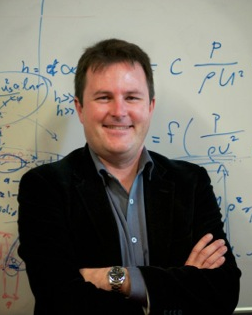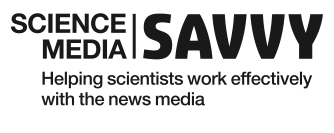At a conference in Hamilton this week I heard the most articulate argument yet as to why scientists should actively communicate their science via the media and directly to the public.
One of the keynote speakers at the International Symposium on Transforming Public Engagement on Science & Technology was Professor Shaun Hendy, the University of Auckland lecturer and theoretical physicist who won the Prime Minister’s Science Communicator’s Prize in 2012. Shaun blogs at A Measure of Science and last year published Get Off the Grass, a collaboration with the late Sir Paul Callaghan.

Shaun has been one of the strongest supporters in the scientific community of the Science Media Centre and Sciblogs. Early on in his keynote, titled The Naked Scientist, Shaun quoted the charismatic founder of the UK Science Media Centre, Fiona Fox, whose philosophy permeates the international SMC network. Fiona said:
“The media will DO science better when scientists DO the media better.”
Shaun gets this. An increasing number of scientists are coming to this conclusion too. Inherent in this is an understanding that the media of old, complete with its science reporters, science sections and “paper of record” approach to chronicling the achievements of scientists, is all but gone for good.
Science stories vie for attention alongside general interest stories and general reporters cover scientific discoveries in between court reports and council politics. The depth of reporting and attention that science received a decade ago isn’t there to the same degree. We can wring our hands over the state of the media – or we can adapt to the media’s changing needs and meet their strong desire to illustrate the relevance of science to their readers’, viewers’ and listeners’ lives.
When it comes to communicating directly with the public, scientists have more options than ever, thanks to the proliferation of new media platforms. They can reject these avenues of communication as superficial or trivial or they can leverage them to reach audiences in ways a public lecture or poster presentation can’t.
Below I’ve summarised Shaun’s presentation based on my scribbled notes. Over at Sciblogs you’ll find more commentary from Dr. Alison Campbell, a University of Waikato biology lecturer and science blogger who was also present at the symposium. Shaun himself outlines some good examples of where media savvy scientists have responded when complex and controversial science needed explaining.
The barriers (internal)
Shaun outlined the things that stand in the way of scientists communicating…
– “It’s Not what I signed up for” – scientists are there to do research, generate new knowledge, write up papers and go to conferences. No one ever told them that science communication to the public would be a significant element of what they do and many of them don’t really see it as a priority.
– Time and effort – time blogging or talking to journalists is time out of the lab, away from students. There’s often little support for it from inside the institution for it anyway. Scientists are busy enough as it is.
– Lack of official recognition – The science funding system and performance evaluations don’t capture and reward the effort that goes into science communication. Shaun summed it up best with a comment during his keynote which he later tweeted:
Yup, @Knhannah. Was told to remove public engagement from my PBRF ‘cos it made me look lightweight @saniac @EricCrampton @bernardchickey
– Shaun Hendy (@hendysh) February 17, 2014
– Elitism – there’s the sense, particularly for more abstract areas of science, that the public won’t get it anyway, so there’s no point in trying to communicate it.
– Self-consciousness – There’s the lingering perception among scientists that going on TV, tweeting or blogging is really just self promotion, which isn’t a typical trait of a scientist and something that doesn’t go down particularly well with the scientific community. Scientists care what their colleagues think of them, so this is actually a major consideration.
– Media fears – There’s this unwritten rule that scientists shouldn’t talk outside their own field. This, along with the fear or being misquoted or having their science sensationalised by the media, makes it easier to say and do nothing and just get on with things in the lab.
Media policies – Some scientists can’t talk, even if they want to. They are beholden to the media policies of their institutions, which often preclude them from weighing in on controversial subjects or from talking about work of a commercially sensitive nature.
The barriers (external)
Scientists putting their views out there open themselves up to all sorts of criticism…
– Conflicts of interest – A lot of scientists work for corporations and the government. The perception is that they will always just toe the company line.
– Never a straight answer – Scientists add so many caveats and disclaimers to what they say, they end up just watering it down to bland, fence-sitting commentary.
– Dueling experts – It seems the media can always find an expert to say whatever they want them to say and presenting opposing views is good for ratings.
– Says who? – Is science the only way of knowing things anyway? Scientists don’t have all the answers, their views aren’t especially important.
The solutions (and lessons)
– Context is key – the value of scientific knowledge depends on the context and the better scientists are at providing that context, the better the public’s understanding will be.
– Have a plan – Scientists need to have a communications plan – whether it be about their specific piece of research or commentary on their wider field of knowledge.
– Institutional support – Institutions need to help their scientists communicate their science, which involves giving them the required support and training and acknowledging that it will take some time away from their research – Hendy estimates he spends a day a week on science communication activity.
– Two way street – Scientists must communicate in order to learn, as well as educate. Hendy points to his own blogging experience, where he floats research-related ideas and receives feedback that informs what he does.
– Official recognition – wouldn’t it be great it Shaun’s blogging and media interviews assumed an important place in his PBRF portfolio?
Shaun called his keynote The Naked Scientist for a reason – he sees communication as an integral part of his career as a scientist and the openness that goes with that pervades everything he does. It has paid dividends for him and other scientists who are willing to engage with the media and through new media channels.
We are here to help
 Here at the SMC, Fiona Fox’s comment is a bit of a guiding mantra – and we can’t agree more with Shaun’s view of things.
Here at the SMC, Fiona Fox’s comment is a bit of a guiding mantra – and we can’t agree more with Shaun’s view of things.
We have over 400 journalists registered with us, more than ever before in our history. They are hungry for good stories, willing to give scientists a fair go and recognise the fact that the role of science in our lives is more prevalent and obvious than every before.
The key to delivering what they need is input from scientists who understand their needs, who understand how to effectively communicate their science.
That’s why we set up Science Media SAVVY, the country’s only dedicated science media training course for scientists. We are currently taking applications for our intensive SAVVY workshops in Dunedin and Wellington. Dates for workshops in Hamilton and Auckland will be confirmed soon. We even have PhD student scholarships available to assist emerging researchers in taking advantage of the SAVVY training.
Elsewhere we maintain the SMC Expert Database, one of the most extensive database of scientists in the country, which journalists draw on every day via the SMC when looking for expertise. If you would like to be featured in this database please get in touch.
In April we will publish a desk guide for working with the media, a 28 page booklet aimed at scientists and covering everything from planning your communications strategy, to mastering the TV interview to working with your institution’s communications team. Check back here in April for the desk guide, which will be available as an ebook and as a booklet we hope to get into the hands of as many scientists as possible. Hundreds of journalists have already received our companion booklet, the Desk Guide for Covering Science.
Finally, we’ve collaborated with our Australian SMC colleagues to create Sciencemediasavvy.org – a website full of tutorial videos and tipsheets for scientists engaging with the media. It is a great resource to brush-up on your media skills if you have an interview coming up. We have an exciting new collaboration in the pipeline with our Aussie colleagues that will be of great interest to scientists, journalists alike. More on that soon.
We know that there are real barriers in the way of scientists engaging in science communication. They won’t be fixed overnight. But there is a lot scientists can do now to embrace some of the things accomplished science communicators like Shaun Hendy have incorporated into their everyday work with impressive results.
Peter Griffin
SMC Manager